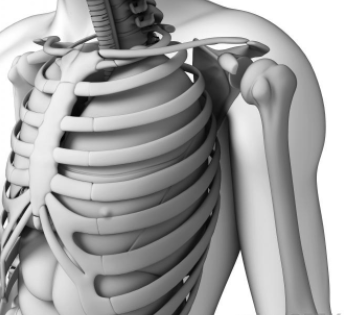Learn all about floating ribs pain in left side, right side and all about their location.
The 11th and 12th ribs are the floating ribs. They are not attached to the sternum nor to other ribs by cartilage at their forward extremity, as are the other ribs. Floating ribs are half the size of the others and do not reach to the front of the body one that articulates on the body of the vertebra and a more anterior tubercle that articulates with the tip of the transverse process of the vertebra..
These last two ribs aren’t as completely connected to surrounding bones, so they are much more susceptible to injury. There’s even a condition known as “floating rib syndrome.” This doesn’t mean that the rib is just floating around in your abdomen, but as a result of injury it may become intensely painful. This condition of rib pain is also known as slipping rib cartilage, rib-tipping, nerve nipping, and clicking ribs.
The intense pain is usually described by patients as an intermittent sharp stabbing pain followed by a constant monotonous pain that may last from several hours to many weeks. The range of severity of pain varies from being a minor nuisance, moderately severe to interfering with activities of daily living. The pain may also be reported to radiate from the costo-chandral area to the chest or to the same level in the back.
The pain is also exacerbated by certain postures and movements: lying or turning in bed, rising from a chair, driving, stretching, reaching, lifting, bending, twisting the trunk, coughing, walking, or bearing loads Thus, this condition may affect sporting activities involving trunk movements and deep breathing, but in particular running, horseback riding, arm abduction, or swimming. Pain may be severe enough to make patients stop playing sports.
What is Floating ribs?
The lowest two pairs of human ribs are floating ribs. They get the name “floating rib” because they are connected to the spin at the back, but are not connected to anything at the front, thus appearing to “float.” These ribs are relatively small and delicate, and include a cartilaginous tip.
Floating ribs Pain
Patients suffering from it feel the pain at the front of the floating ribs, which intensifies with movement or deep breathing. The pain is usually localized on the left or the right and can vary from a mild ache to sharp, stabbing sensation of pain spreading across the rib cage and abdominal wall. The most common cause of this syndrome is a traumatic injury. Patients will usually recall some sort of an injury after which they started to experience pain.
Floating ribs Pain Left Side
Pain in the left rib cage can start slowly and proceed to cause intense sharp pain. For some people pain can be sudden and sharp. Pain in the rib cage can vary from mild to severe excruciating pain. For many people dull pain can be felt in the left side of the abdomen due to indigestion. It can also cause chest pain when acid and other enzymes from the stomach are pushed up into the esophagus causing burning pain and irritation. Pain in the left rib cage can be felt in many parts of the body depending on the cause. If you have sharp pain in the throat with burning chest pain it can be due to acid reflux. Pain may start from your back slowly progressing towards front portion of the body, if it caused by kidney stones. Sharp excruciating pain in the left rib cage can be due to angina pectoris or heart attack which is often associated with other signals like profuse sweating, increased heartbeat and the pain shifts towards left shoulder and arm.
Floating ribs Pain Right Side
Costochondritis can also manifest itself as pain to one side of the ribcage, although this is rarer. Many doctors don’t consider Costochondritis as a potential cause of lower right rib pain for that very reason. Their lower right rib pain is caused by a complication with their gallbladder. Then again, there are many people with lower right rib pain who have had their gallbladder removed already. This is especially common among people who have experienced some sort of fall or blow to the chest. Essentially, what happens is that a piece of the cartilage on their ribcage breaks off and just kind of floats around. If it becomes inflamed, it can cause intense lower right rib pain. When cartilage breaks off your ribcage, it is called costo-chandral separation (slipped rib syndrome).
Floating ribs Location
The eleventh and twelfth ribs have each a single articular facet on the head, which is of rather large size; they have no necks or tubercles, and are pointed at their anterior ends. The eleventh has a slight angle and a shallow costal groove. The twelfth has neither; it is much shorter than the eleventh, and its head is inclined slightly downward. Sometimes the twelfth rib is even shorter than the first. Thus floating ribs are located under the tenth rib. They are the last part of ribcage.
 Health & Care Information
Health & Care Information



